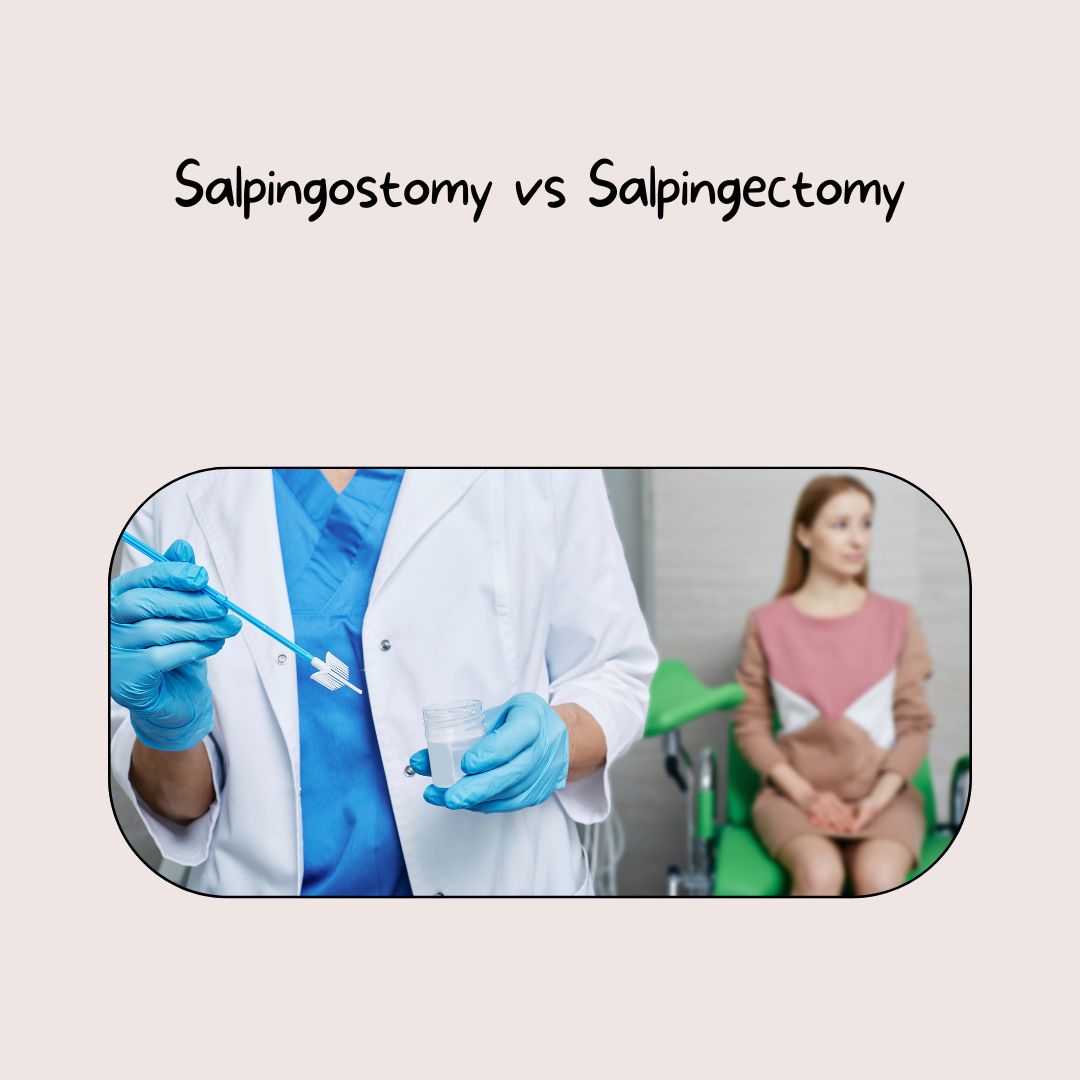Salpingostomy vs Salpingectomy

Salpingostomy vs Salpingectomy: Understanding the Differences: When it comes to reproductive health, there are a number of medical procedures that women may need to consider, including salpingostomy and salpingectomy. These two procedures are related to the fallopian tubes, which play an important role in fertility and reproductive health. Understanding the differences between these two procedures is important for women who are considering their options for family planning or addressing health concerns.
Definition of Salpingostomy
Salpingostomy is a surgical procedure that involves opening the fallopian tube to remove an obstruction or to treat a condition that is affecting fertility. This procedure is typically used when the blockage in the tube is relatively small and can be removed without having to remove the entire fallopian tube. The procedure involves making a small incision in the tube and removing the blockage. Once the blockage has been removed, the incision is closed and the tube is left intact.
Reasons for undergoing a Salpingostomy
There are a number of reasons why a woman may choose to undergo a salpingostomy. One of the most common reasons is to remove a blockage in the fallopian tube, which can prevent a woman from becoming pregnant. This procedure may also be used to treat conditions such as endometriosis or tubal ligation reversal.

Types of Salpingostomy
There are two main types of salpingostomy: linear and cornual. Linear salpingostomy is a procedure that involves making a linear incision in the fallopian tube to remove the obstruction. Cornual salpingostomy is a more complex procedure that involves removing a segment of the fallopian tube to treat a blockage.
Risks and Complications of Salpingostomy
Like any surgical procedure, there are risks associated with salpingostomy. These risks include bleeding, infection, and damage to surrounding tissues. In some cases, the procedure may be unsuccessful in removing the blockage or may cause scarring that can further impact fertility.
Recovery and Aftercare for Salpingostomy
After a salpingostomy procedure, patients will need to take time to rest and recover. They may experience some pain, swelling, or discomfort in the area of the incision, but these symptoms can be managed with pain medication and rest. Patients should avoid strenuous activity for a period of time after the procedure and follow their doctor’s instructions for aftercare and follow-up appointments.
Comparison between Salpingostomy and Salpingectomy
Benefits of Salpingostomy over Salpingectomy
There are a number of benefits to undergoing a salpingostomy over a salpingectomy. One of the most significant benefits is that a salpingostomy allows a woman to preserve her fertility by leaving the fallopian tube intact. This means that she may still be able to conceive naturally after the procedure. Additionally, salpingostomy carries a lower risk of ovarian failure and other complications than salpingectomy.
While salpingectomy may carry a higher risk of complications and impact fertility, there are also some benefits to the procedure. One of the most significant benefits is that salpingectomy can greatly reduce a woman’s risk of ovarian or fallopian tube cancer. Additionally, salpingectomy may reduce the need for future surgeries or treatments related to reproductive health.
Factors to consider when choosing between the two procedures
When choosing between salpingostomy and salpingectomy, there are a number of factors to consider. Age, family history of cancer, personal cancer risk, and desired future fertility are all important considerations. Women who are at high risk for ovarian or fallopian tube cancer may choose to undergo a salpingectomy as a preventative measure, while those who are looking to preserve their fertility may choose a salpingostomy.
Conclusion
In conclusion, understanding the differences between salpingostomy and salpingectomy is important for women who are considering their options for family planning or addressing health concerns. While both procedures have their benefits and risks, it is important to make an informed decision based on individual health needs and personal preferences. Women should discuss their options with a healthcare provider to determine the best course of action for their unique situation.
One Comment